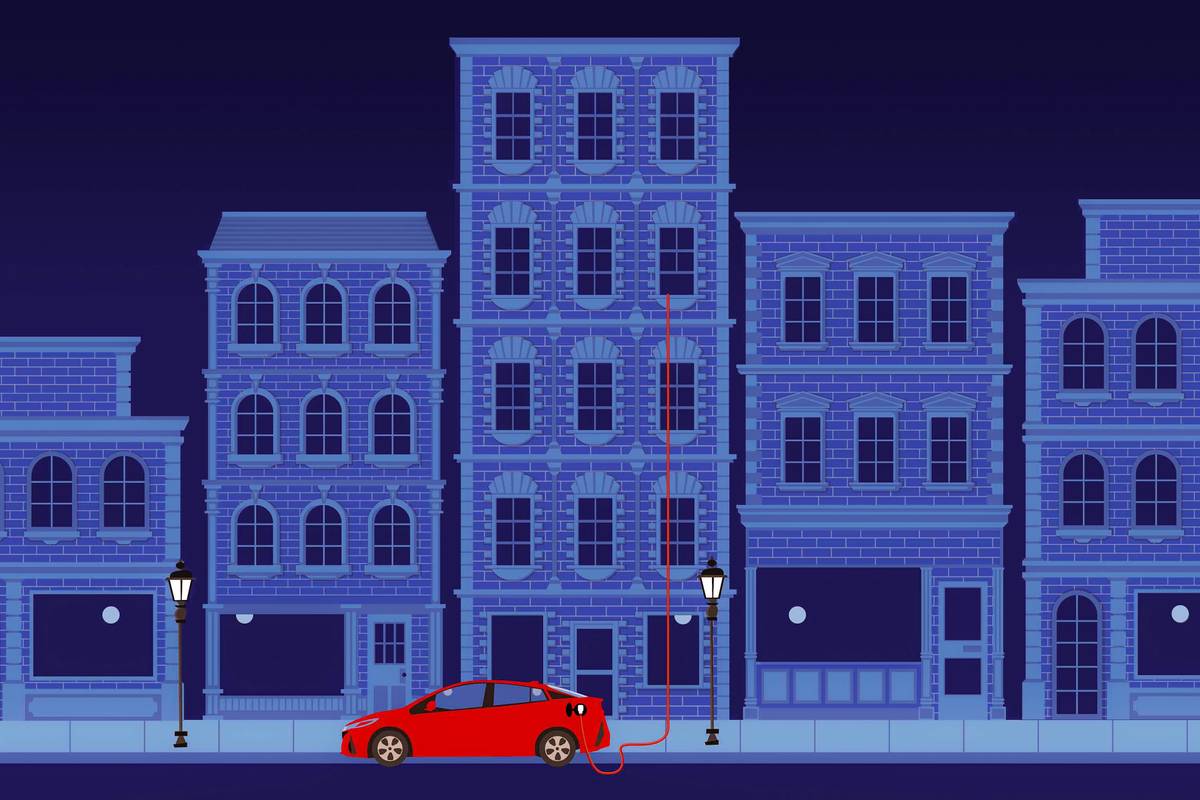Do I Need a Home Charger to Own an Electric Car?


If you’re considering a gasoline vehicle as your next car, likely the last thing on your mind is how to keep from running out of gas. But EVs seem to be getting all the attention in the auto world now, and if you’re making the leap to an electric vehicle future, how to keep from running out of juice might be top of mind. That brings up the question of whether you need a home charger to live with your new electric car.
Related: What Is Level 1, 2, 3 Charging?
The answer for now (and for the foreseeable future) is probably yes — at least if you’d like to do your part for the planet but also would like to go about your business without planning life around your charging needs. By home charging, we mean a Level 2 charger (a 240-volt source that typically can add 25 or more miles of driving range per hour) that you control and that’s available for use on your household’s schedules — reserving public charging for short-term needs around town or for distance traveling. You might decide you can make do in your individual situation without one as the expansion of public charging could make it ever more possible in years to come, but for now, home charging is arguably the only plan and will remain the ideal one unless you’re comfortable relying on forces beyond your control.
Key to understanding the emphasis on overnight, at-home charging is the fact that today’s EVs charge slowly compared with the alternative: a few minutes at a gas station. Even public DC fast charging is comparatively slow, often taking an hour or more if the comparison is a fair one — from empty to full (as one might require if home charging isn’t an option).
Home charging lets you plug in when it’s convenient for you. There’s no waiting and you can charge up while you are sleeping or bingeing on Netflix, i.e., without having to think about it. With today’s longer-range EVs, you shouldn’t need to do that every night, though you can also plug in each night and always start the day with a full charge. And you can use the vehicle’s app, or an app provided by more sophisticated chargers, to set charging times for periods of the cheapest electricity and — important in extreme climates — you can precondition the cabin temperature on plug power before you drive so you don’t waste miles of range by starting out with a hot or frigid interior.
Home charging gives you more control and, once installed, requires only a little bit more attention and planning than you use now to drive on gasoline.
Public or Work Charging Might Do for You
I said “probably yes” above because some people in some situations could manage their EV just on out-of-home charging. If your employer offers shared charging, as some now do, that could meet most of your needs while you work, with only occasional need to use public charging stations. Even if you park in a public garage for work, it’s increasingly common (and incentivized or required for new construction in some instances) for such garages to have charging stations. Either option becomes more workable if your commute is short and you otherwise drive relatively few miles per week. The same might be true for folks with access to shared chargers in apartment garages or lots.
And as more public charging stations are built in other locations, there is greater likelihood of charging within walking distance of your home or available on your regular rounds, such as at a grocery store or shopping mall. (Workable, but not as easy; I live in a city where such options are available, and they’ve worked for me at least on a short-term basis with loaned vehicles. But I wouldn’t want them to be my only options, in part because I like more control.)
The Drawbacks
While the public charging options can be useful or even sufficient for some drivers, they have drawbacks. Some public chargers are expensive. Some stations in parking garages might be free to use but require you to pay for the time in the garage. And such free charging is subsidized for now to encourage EV adoption, but there’s no guarantee such perks will last. We’ve seen this play out once already.
It’s also not unusual in my experience to find one or more of the chargers at a public station, particularly the free ones, to be offline. A pay-to-park garage near Cars.com’s Chicago office had convenient free chargers, which later became pay chargers, then mostly out-of-order chargers, then one day they just disappeared. The most convenient charging station near me in Washington, D.C., has 12 ports, but in the past year, sometimes as few as four were working. Upkeep could have been affected by the pandemic, but the lack of reliability still is troubling. And in a high-traffic area, you might find the available spaces taken when you arrive at your preferred station.
Public charging will get more available — and faster. More high-voltage DC fast-charging stations are being installed (100 miles of range or more in a half-hour) and the power of such chargers is increasing, as is the capability of new EVs to handle more powerful charging. For Tesla owners, access to its extensive proprietary charging network, including more high-speed Superchargers, is an advantage, and Tesla’s Elon Musk recently tweeted that the Supercharger network will be opened to non-Tesla vehicles. Other networks, such as Electrify America, are installing more chargers with much higher speeds. But while these fast chargers are essential for long-distance travel (most now are along highways) and for quick added range on the fly, EV makers warn against making fast charging your go-to for routine charging because it could compromise the life of your battery.
More From Cars.com:
- Electric Cars With the Longest Range
- Should I Buy an Electric Car or Plug-In Hybrid?
- What’s New With Electric Vehicles for 2021?
- More Electric Car News
- Tesla SUV Buying Guide
Consider a PHEV for Now
If you want to drive electric and Level 2 home charging is out of reach, but you have access to an ordinary 120-volt household electric outlet where you park, you could consider a plug-in hybrid electric vehicle. With a PHEV, you could do much or even all of your routine driving on its electric driving range — typically about 25 to 50 miles (Americans on average drive about 40 miles per day). Because PHEVs have smaller batteries, most can charge overnight with just 120 volts. That’s categorized as Level 1 charging and can typically add 3 to 5 miles of range per hour. The only downside we’ve discovered is that Level 1 chargers usually aren’t strong enough to power a vehicle’s heater or air conditioning when preconditioning the cabin in the coldest or hottest temperatures, resulting in the battery charge being somewhat depleted or the engine starting.
You still can add miles on the go in a shorter time at a Level 2 public charging station at work or while you shop or run errands. And when you exceed the electric range, you still are driving a hybrid vehicle that usually has higher fuel mileage and lower emissions than a comparable conventional vehicle.
There are several PHEVs now on sale, and more are coming. While many are costly luxury models, there are also mainstream-brand options with a variety of capabilities and body styles. Examples range from compact hatchbacks like the Toyota Prius Prime (25 miles of EV range, 54 mpg combined as a hybrid) and Hyundai Ioniq (29 miles, 52 mpg) to the Toyota RAV4 Prime all-wheel-drive SUV (42 miles, 38 mpg) and Chrysler Pacific minivan (32 miles, 30 mpg). They generally cost more than their gasoline-only equivalents, but these examples still qualify for $4,502 to $7,500 in federal EV tax credits as of publication. One of these might be a good transition while you sort out a more capable home charging solution down the road.
Cars.com’s Editorial department is your source for automotive news and reviews. In line with Cars.com’s long-standing ethics policy, editors and reviewers don’t accept gifts or free trips from automakers. The Editorial department is independent of Cars.com’s advertising, sales and sponsored content departments.

Former D.C. Bureau Chief Fred Meier, who lives every day with Washington gridlock, has an un-American love of small wagons and hatchbacks.
Featured stories




